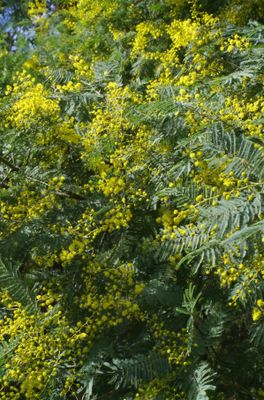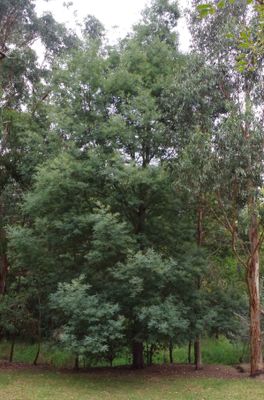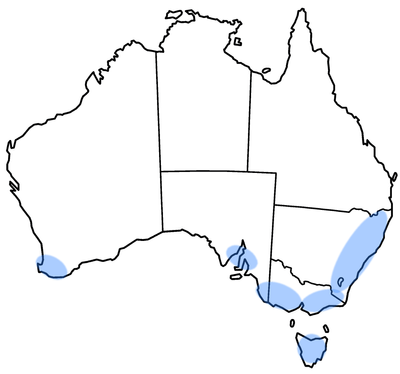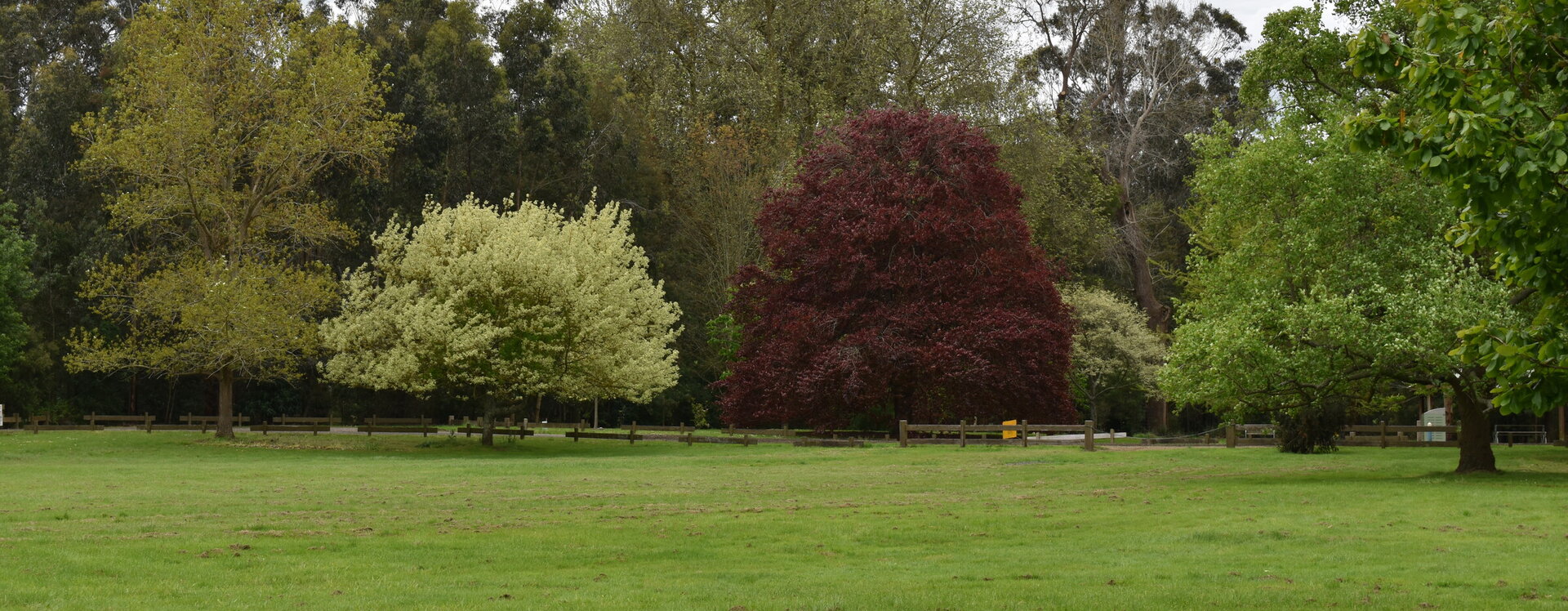



Acacia dealbata
Acacia
Indigenous Australian Native
Acacia dealbata, or silver wattle, is a species of flowering plant in the legume family Fabaceae, native to southeastern Australia in New South Wales, Victoria, Tasmania, and the Australian Capital Territory and widely introduced in Mediterranean, warm temperate, and highland tropical landscapes. It is a fast-growing (short lived, typically <20 years) evergreen tree or shrub growing up to 30 m tall, typically a pioneer species after fire. The leaves are bipinnate, glaucous blue-green to silvery grey, 1–12 cm (occasionally to 17 cm) long and 1–11 cm broad, with 6–30 pairs of pinnae, each pinna divided into 10–68 pairs of leaflets; the leaflets are 0.7–6 mm long and 0.4–1 mm broad. The flowers are produced in large racemose inflorescences made up of numerous smaller globose bright yellow flowerheads of 13–42 individual flowers. The fruit is a flattened pod 2–11.5 cm long and 6–14 mm broad, containing several seeds.
4.00 Location B8 Latitude; -38.4015720000000 Longitude- 146.054528000000
4.01 Location Many specimens form part of the Tarwin River bank restoration plantings undertaken by the West Gippsland CMA in 2009/11
Significance to the Ganai community.
Silver wattle is known as MART. The seeds were ground to make flour for damper or steamed and eaten whole. Gum was eaten or mixed in water and allowed to ferment. The bark was used medicinally, with a decoction used as a treatment for diarrhoea, haemorrhage, heavy menstrual flow and other conditions. The wood was used for handles for implements and the inner bark was made into string.
Location
Many specimens form part of the Tarwin River bank restoration plantings by the West Gippsland CMA in 2009/11

